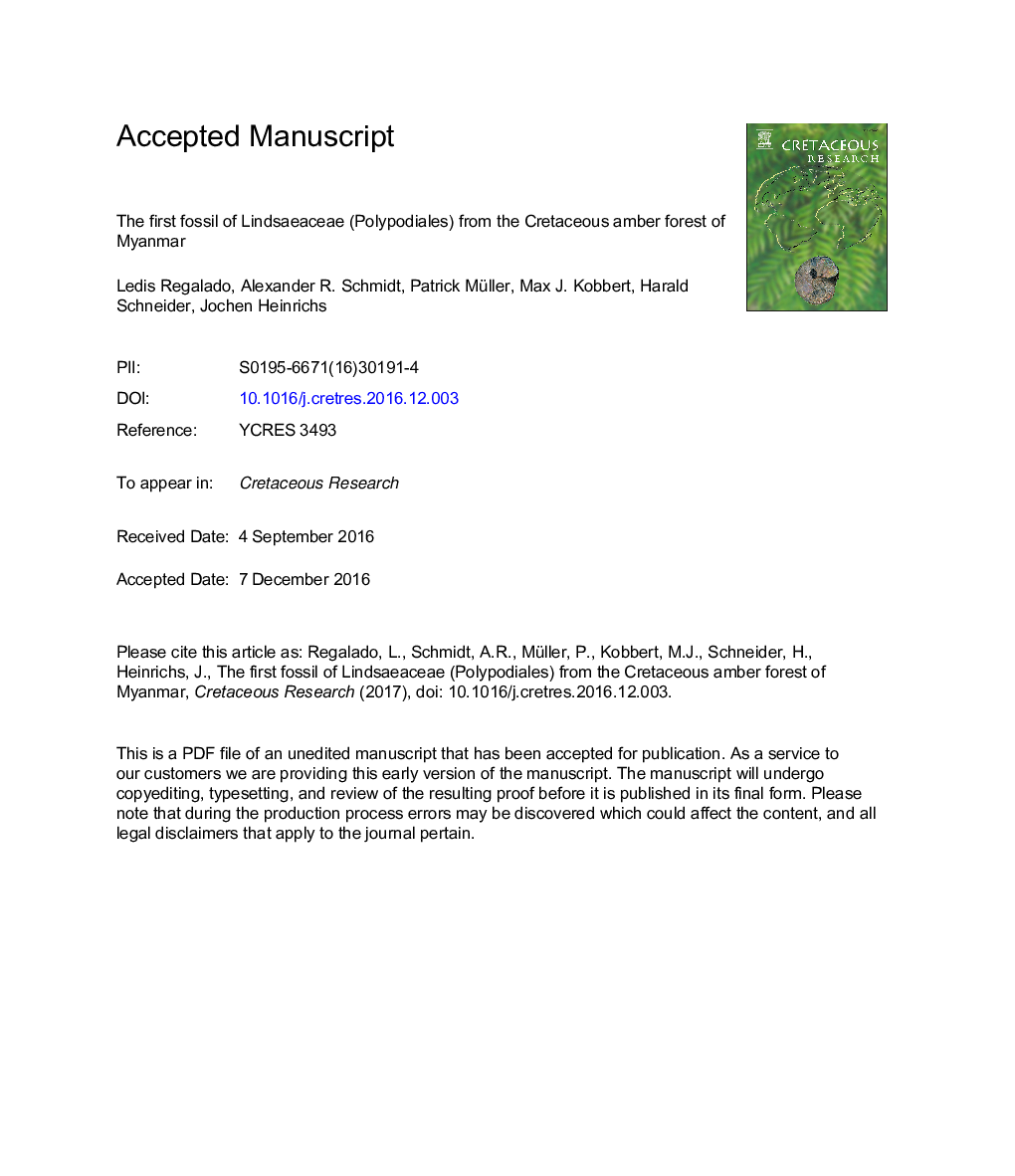| Article ID | Journal | Published Year | Pages | File Type |
|---|---|---|---|---|
| 5788078 | Cretaceous Research | 2017 | 16 Pages |
Abstract
Burmese amber is currently the most important source of Cretaceous amber-preserved plants. Recent findings indicate a rich cryptogamic diversity in the source forests of this amber. Besides of liverworts and mosses, several fossils of polypod ferns have been discovered, so far. Here, we report a new fern inclusion from Burmese amber which represents the first leaf fossil of the polypod family Lindsaeaceae. The fossil shows all characteristics of extant Lindsaeaceae, however, it remains unclear if it belongs to an extant or an extinct genus. Along with the sole other Cretaceous Lindsaeaceae fossil, a root fossil from the Albian of North America, the new fossil indicates a wide distribution of this fern family in the Northern Hemisphere during the late Early Cretaceous.
Keywords
Related Topics
Physical Sciences and Engineering
Earth and Planetary Sciences
Palaeontology
Authors
Ledis Regalado, Alexander R. Schmidt, Patrick Müller, Max J. Kobbert, Harald Schneider, Jochen Heinrichs,
